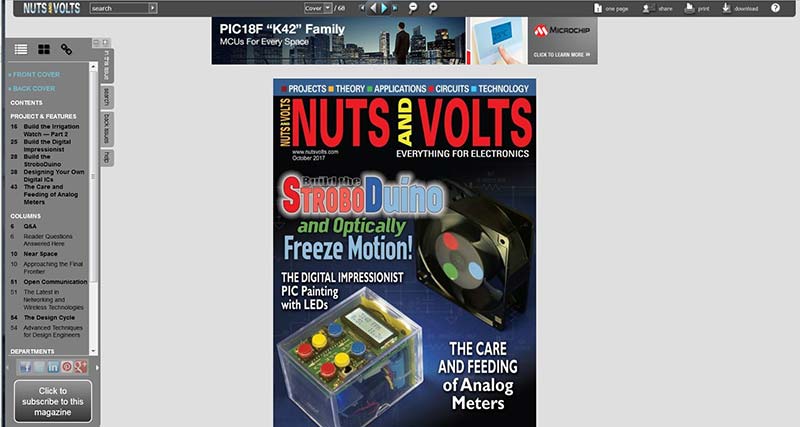My near space missions are tracked using amateur radio. After recovery, the position reports from the balloon are saved into a file and then imported into a spreadsheet. The data is not very useful unless I can link it with the balloon’s altitude. This process does take some time and does lack some accuracy since the time the data was collected doesn’t correspond exactly with the time the balloon’s position data was transmitted. So, I decided to create a weather station that records position and environmental data at the same time during near space missions. Plus, you’ll see that with minor modifications, it can turn into other things like a weather station for ground use, for UAV use, and hikers.
:::
Read This Article!
If you’re a subscriber and your subscription includes this issue of Nuts & Volts, you can read this article in our digital edition by clicking the blue icon in the upper right corner. Use the email address associated with your subscriber services account to login.

If you're a member of our Preferred Subscriber Network, not only will the magic blue icon let you read this article, but EVERY article in EVERY issue is yours to enjoy! Over a decades worth of content is stored in our digital archive!
If you’re not a subscriber, you can still view a few sample pages of our digital edition or subscribe here for full digital access and/or print delivery. Also, as you browse around our site, you will find selected articles have been posted in their entirety for you to enjoy.
Corrections
Did I overlook something on page 55 in the June 2017 Near Space column?
- The LM355 shows a lead going left to NO connection.
- The 24LC256 shows a lead going right to NO connection.
Ted Miesk
Crescent City, CA
That's correct for the LM335. The third lead in the LM335 is a temperature adjust pin and not needed. Since the temperature is being digitized by the PICAXE, any necessary adjust to the sensor reading can be made by the PICAXE code or in a spreadsheet.
Pin 7 of the 24LC256 is a write protect pin. It prevents the memory chip from being written to in an accident. That pin should be connected to ground to enable the write, so that is a mistake on the schematic.
Thanks for asking.
Paul Verhage

